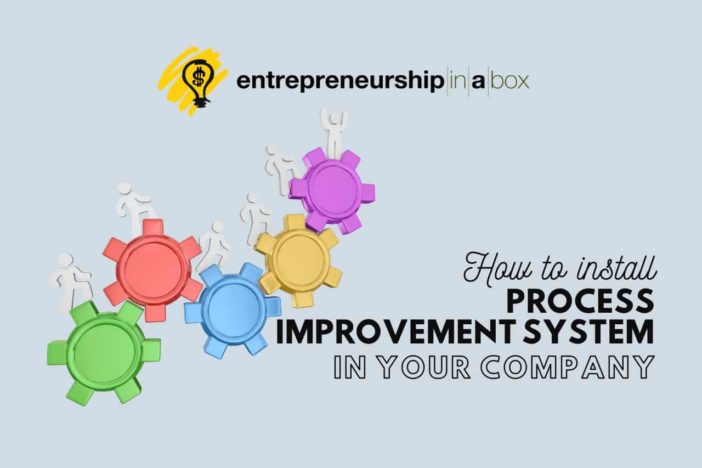Process improvement systems help you streamline workflow. If you are an entrepreneur who wants to be more efficient and save time, you may need to implement this system to serve your clients and customers better.
Your business performance, in large part, will depend on your own work as an entrepreneur. You need to accomplish specific functions related to your business. These functions are accomplished through processes that you have designed for your company. So, in large part, your work will be based on the activation and performance of the processes. Because of that, you will need your own process improvement system.
Do you want to improve productivity and profits in your organization? This step-by-step guide will walk you through the process of setting up and implementing an effective process improvement system.
Functional and Process Breakdown of Your Organization
Most organizations are structured in functions that are set of tasks based on specialization. When it comes to money, it is a financial function. Manufacturing is inside the production function. Marketing is in the marketing function. But, fulfilling customers’ requirements need the combined expertise of all these functions. Such an approach comes from the industrial revolution by Adam Smith and then from Frederick Taylor and Henry Fayol.
Peter Drucker, the father of modern management, gives a helpful definition of functions. According to him, the function is a set of activities that create a common and unique contribution to the realization of the company’s mission.
Let’s see what the difference is between the functional and process breakdown of an organization.
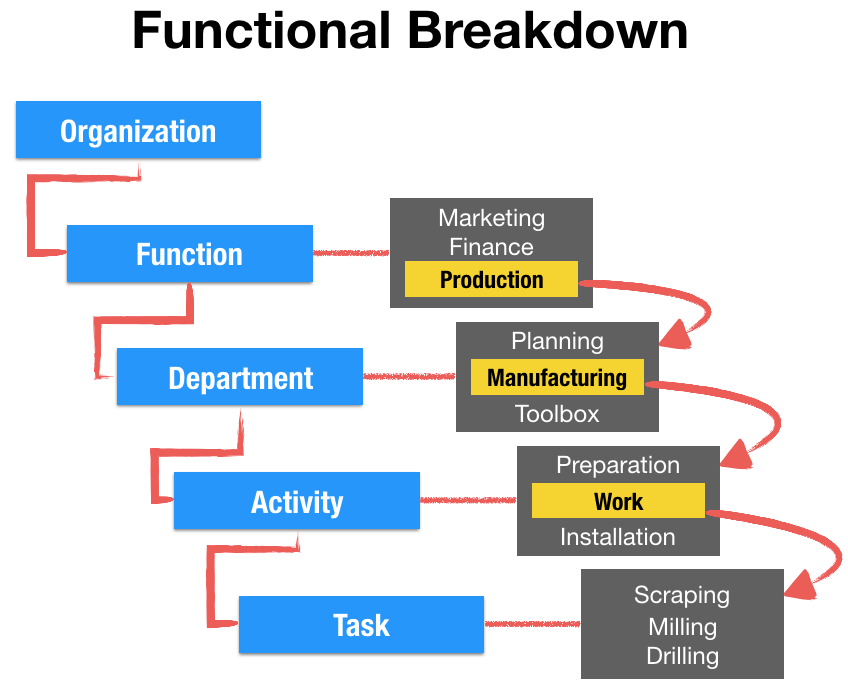
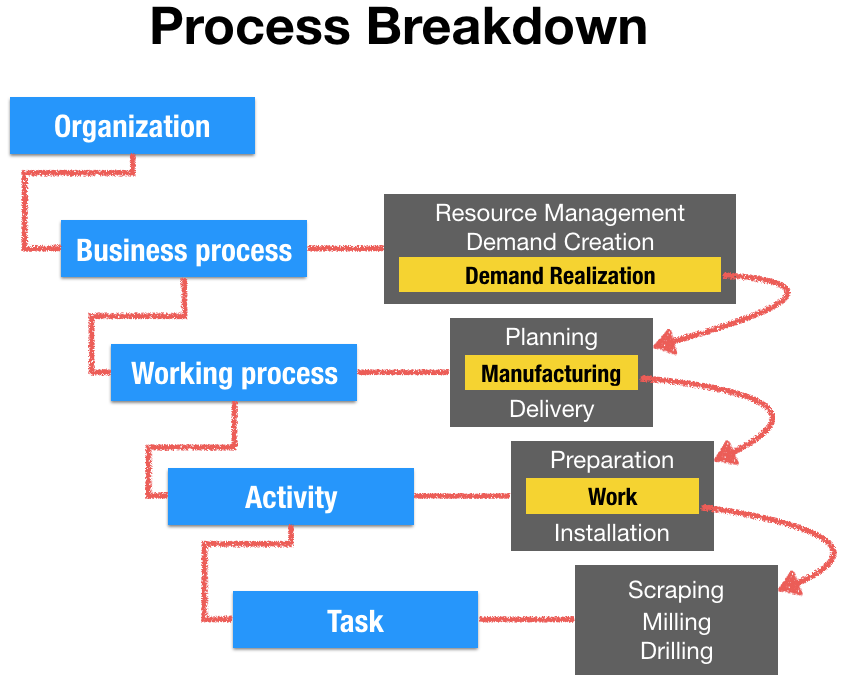
The figures present the functional and process breakdown of the work in an organization. While it appears they have only slight changes in the words, the two approaches are quite different.
By setting up a business process on top, you are changing the way how the work is managed. With functional breakdown, you manage the results by contributing to the specific function and department. On the other side, with the process breakdown, you manage the processes that deliver results. It doesn’t matter which function or department does the work. The output or the result is what matters the most. In such a way, you will cut all unnecessary functional and departmental restrictions.
Related: How to Develop and Improve Your B2B Sales Processes
Because of that, I always advise my clients to use the process-oriented design of their companies. So, they will create a specific process hierarchy that will be easy to follow by all persons in the company. The process hierarchy will look something like this:
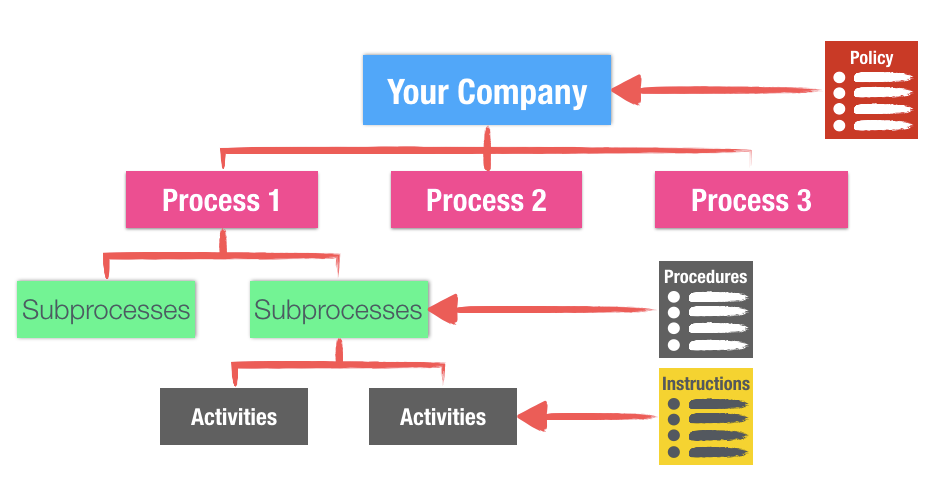
You will need a system that will improve your everyday processes.
Prepare Your Workplace For Process Improvement
The process improvement system that I will present here depends on you and your workplace. So, the best way to start with this process is to prepare your workplace for the process improvement that will follow.
Follow three steps to prepare your workplace for everything that will follow:
1. Make a list of all things surrounding you at your workplace.
Many times very messy workplace brings a large negative effect on an entrepreneur’s productivity. In such a case, you are surrounded by too many unimportant things related to your job. They don’t help you but make your tasks much harder. When you want to start process improvement, the first thing is to make a list of all things around you. So, why not start with things at your workplace?
So, at this step, you need to list everything that surrounds you inside your office. Start with the closest things and finish the list that is not so close to you inside your office. In such a way, you will probably see that you have some things close to you even if you don’t use them daily. But, also, you will have things that you frequently use, but you need to get up, take them and use them to finish your work.
This step will help you to better prepare for the next step in this process.
2. Sort all things from the list
The second step here requires sorting everything from a list according to the average number of times you use them daily. Now, when you have the list, you can start thinking about the importance of each item on your newly created list. How often do you use the specific item from the list on average daily, weekly, or monthly? Answer this question and order the items from the list according to the average number of times you use them.
This step will help you see the big picture about everything that surrounds you in your office. The output will help you find what is not essential and what you don’t use in your work. So, you are ready to start cleaning your list.
Use 5S And Make Your Workplace More Productive
3. Remove things you are not using
At this step, you need to remove all things you are using zero times daily and remove them from your workplace. Because now you know the number of times you use every item listed on your list, you can easily remove all items that are not used at all weekly. So, after this step, you will have a clean list of all the essential things you use for your job. There will also be items you use a very small number of times. For these items, you need to answer do you really need them or what they bring to the results of your work. Then you can decide if you want to remove them or move away from your closest working environment.
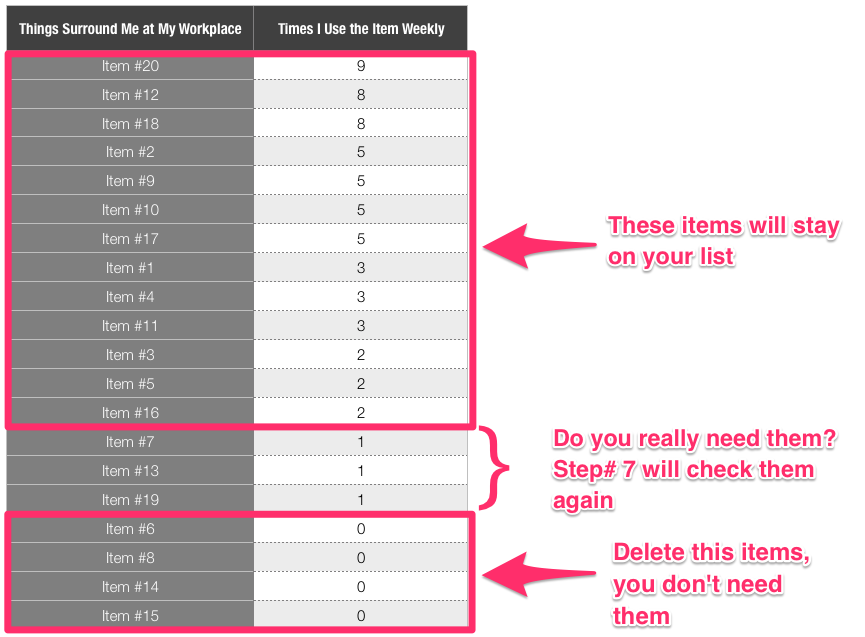
Prepare Your Business Functions For Process Improvement Process
Now it is time to prepare your processes for the process improvement process. As I explained at the beginning of this post, your processes do the job related to different functions. Because of that, you will need to start with the definition and redefinition of your company’s functions. This is important to start developing totally new processes or optimizing existing processes in your company.
4. List all your workplace’s functions
At this step, you will need to list all your workplace’s functions according to the importance of doing your work. It is time for your next list important for your planned process improvement efforts.
What are the most important functions you are performing at your workplace?
Answer this question and make a list of all critical business functions. While you are making this list, think about the importance of each function at the same time. You will need this in the next step.
5. Delegate some of the functions
Can you delegate some of the functions that are less important for your business’s success? In this step, you will need to find the functions you are performing, but they are not so crucial for your workplace goals. Or, they are not something that brings the highest value for your small business.
What are these functions? Can you cut them or delegate them? Think about the most critical functions that will need your full potential and focus for your business success. You don’t want your processes to have functions that you don’t need to perform. This is essential preparation for your process improvement efforts.
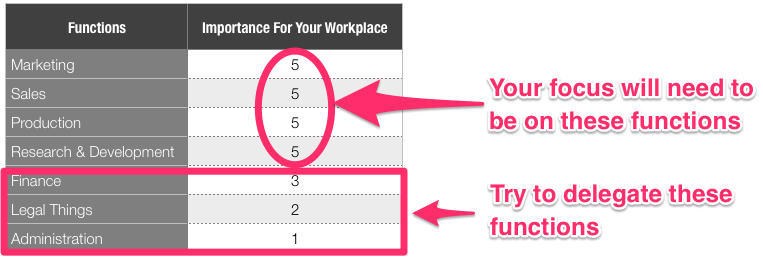
Prepare Your Processes For the Process Improvement Process
Until now, you have cleaned nonimportant things and made a redefinition and analysis of your most essential business functions. Now you can quickly start with preparing your processes to do the right job for your company.
6. Define all the important processes for your small business
At this step, you will need to define all critical processes for all functions that survive from the previous step. Until now, you have defined essential tools for your work and the most critical functions for your business success. Now it is time to think about processes you want to define. These processes you will include in your process improvement efforts. For each of the critical functions from the previous step, define the most critical processes. These processes will ensure the successful implementation of your business functions.
7. Start drawing the process maps
Now you will need to develop process maps for all critical processes inside the most critical business functions. So, what you need to do in this process improvement system is to draw process maps for each of the processes defined in the previous step. Additionally, on each process map, write down all the things from your list after step 3 you need to use to finish the process. Now, you can additionally check if you really need all these things surrounding you for your work. If there are things you have not put on your process maps, remove them from the list from step 3.
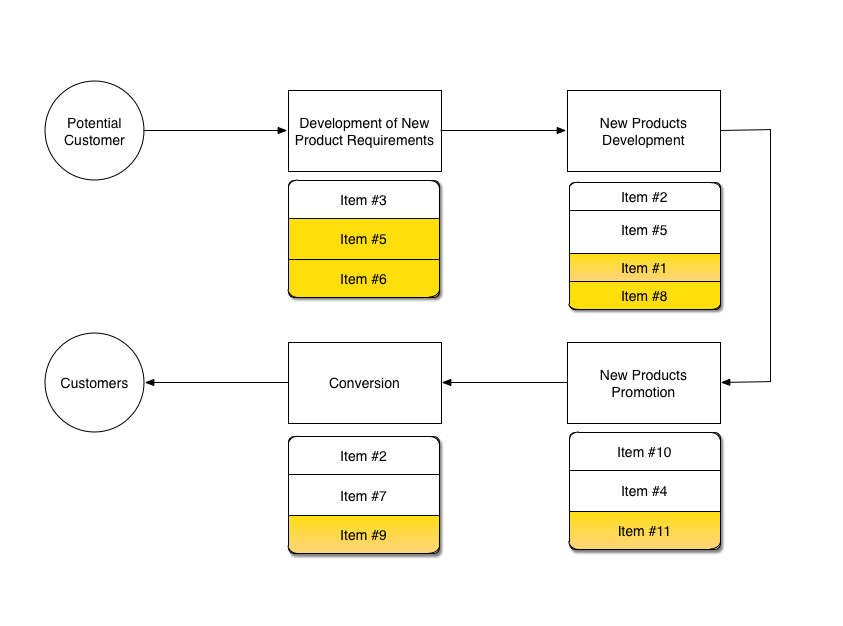
Process Improvement Steps
8. Rearrange things on your process maps
Now when you have a clear picture of the most critical processes in your small business, you can start rearranging things on your process maps.
Look at your process maps and think about rearranging things you are using. This is important to improve the productivity of each process. Where each of the items will need to be, and how will you need to use them? When answering these questions, write the answers on a piece of paper in the form of action steps. If you are rearranging your processes, see if you can remove more things from them. This is important if you want to use a minimalist approach as a part of your process improvement efforts. If you can remove some things from your processes, remove them also from your workplace.
9. Start implementing your new processes in your everyday work.
Now is a time to put your processes to do the work for which you design and redesign them. Remember that the process improvement system is a continuous improvement process. So, even you have done everything with your best wishes, you will still have some problems that will need solutions. On the other side, the solutions mean more improvements.
10. Repeat all previous 9 steps.
Check if you can repeat all the steps after 5-6 months. Your business is changing. Your market is changing. So, your processes will also need to change. Be sure to make these processes to be continuously implemented in your company. In such a way, you will bring a continuous improvement process and ensure a continuous competitive advantage for your small business.

